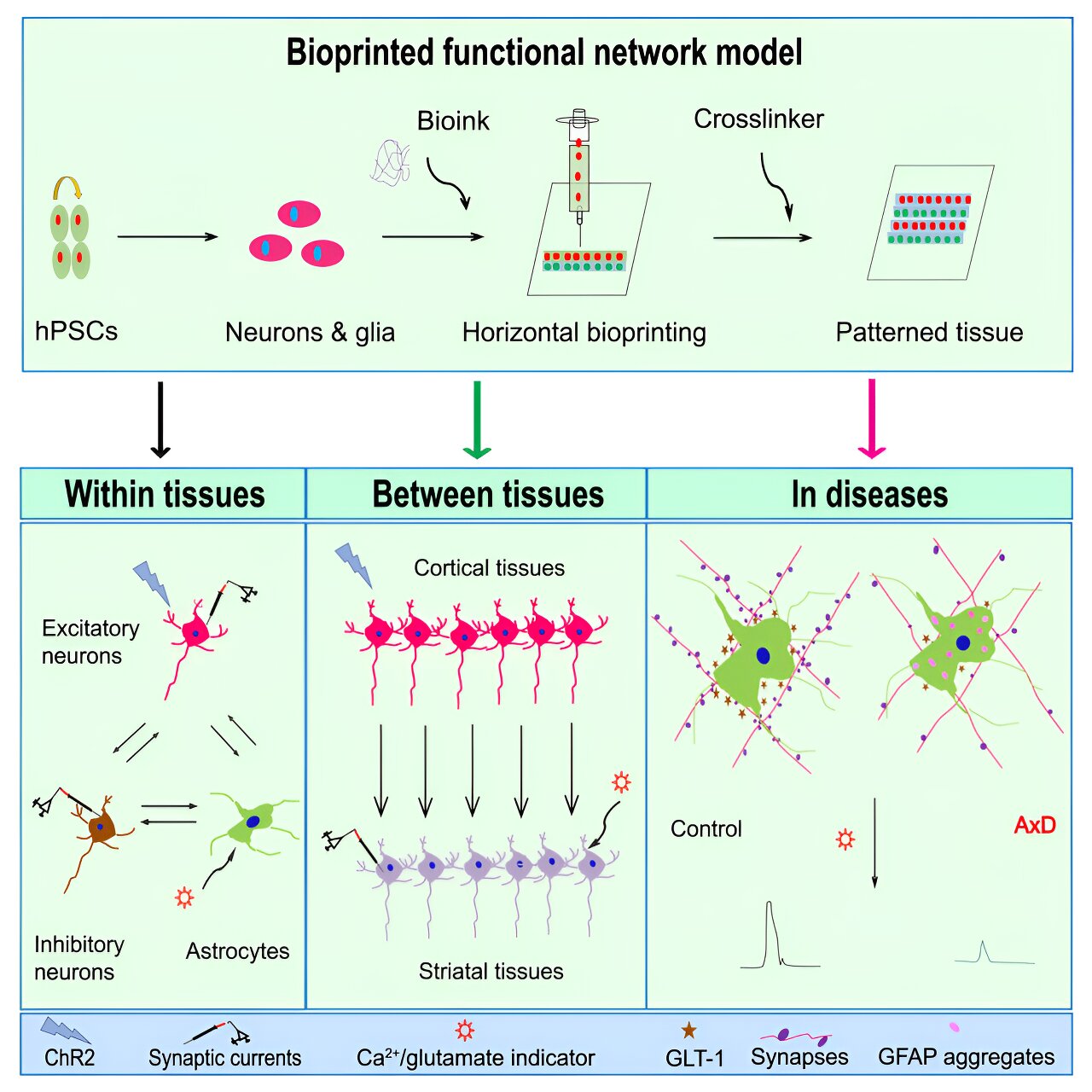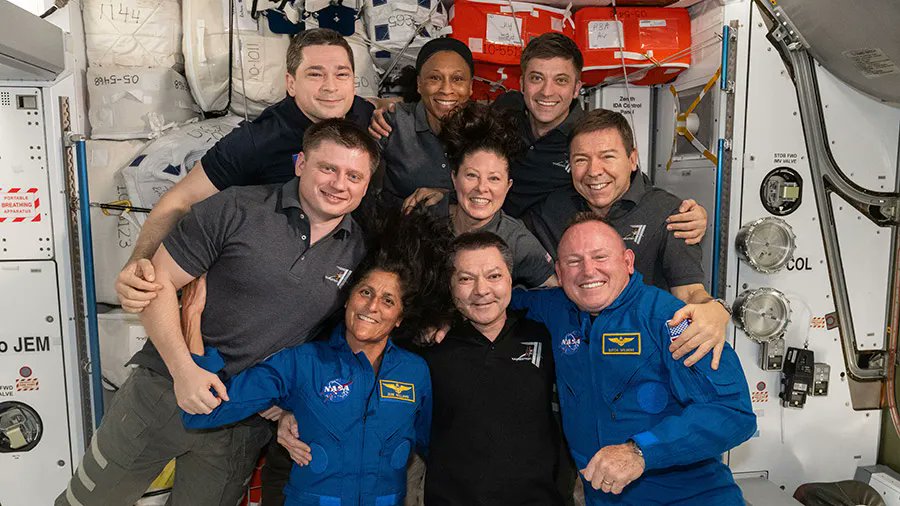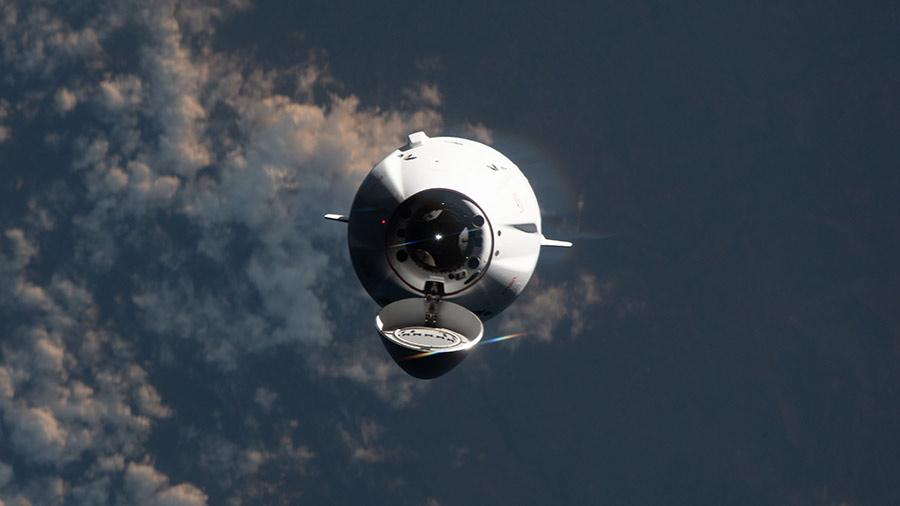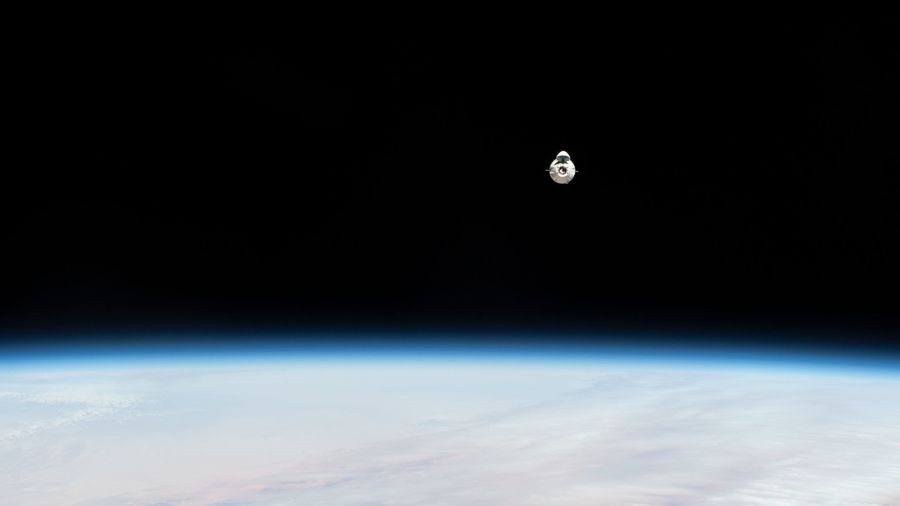
Advanced space biology continued on Friday aboard the International Space Station to develop and test therapies for a range of space-caused and Earthbound health conditions. The Expedition 71 crew members also fit in light maintenance duties and their daily exercise sessions during their busy research schedule.
Eye health has been a main research focus this week as the crew conducted standard eye exams and investigated spaceflight-induced vision issues. Mice on the station are being treated with a gene therapy that may prevent retinal conditions and reduced vision associated with living in space. The mice will be returned aboard the SpaceX Dragon cargo spacecraft for analysis on Earth.
NASA Flight Engineers Matthew Dominick and Jeanette Epps split their shift on Friday and took turns feeding the mice and cleaning the rodent habitats located in the Destiny laboratory module. During the rest of their day, the two astronauts serviced a variety of life support and science hardware and worked out on a treadmill, exercise cycle, and the advanced resistive device.
NASA astronaut Mike Barratt spent most of his day in the Kibo laboratory module servicing brain organoid samples and injecting a test drug into the specimens. Working in Kibo’s Life Science Glovebox, Barratt spent his shift treating the samples and placing them in the Space Automated Bioproduct Laboratory, a research incubator, for later analysis. Results from the study may lead to insights into microgravity’s effect on the central nervous system and potential treatments for neurological diseases on Earth.
3D bioprinting continued onboard the orbital outpost on Friday as NASA Flight Engineer Tracy C. Dyson worked in the Columbus laboratory module operating the BioFabrication Facility. She swapped sample cassettes in and out of the device then stowed printed cardiac cell samples inside the Advanced Space Experiment Processor for a two-month incubation period. The samples will be returned to Earth for future analysis. The biotechnology study may enable future space crews to print on-demand meals and medicines and doctors on Earth to engineer replacement organs and tissues for patients.
The space station’s three cosmonauts had an off-duty day and observed Cosmonautics Day which celebrates cosmonaut Yuri Gagarin’s first spaceflight on April 12, 1961. Station Commander Oleg Kononenko and Flight Engineers Nikolai Chub and Alexander Grebenkin downlinked a video message commemorating Gagarin’s first mission. The trio from Roscosmos then deactivated and disconnected sensors that were monitoring and recording their body functions.
Learn more about station activities by following the space station blog, @space_station and @ISS_Research on X, as well as the ISS Facebook and ISS Instagram accounts.
Get weekly updates from NASA Johnson Space Center at: https://roundupreads.jsc.nasa.gov/
Get the latest from NASA delivered every week. Subscribe here: www.nasa.gov/subscribe




